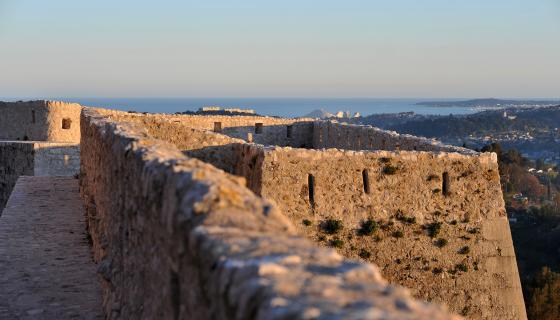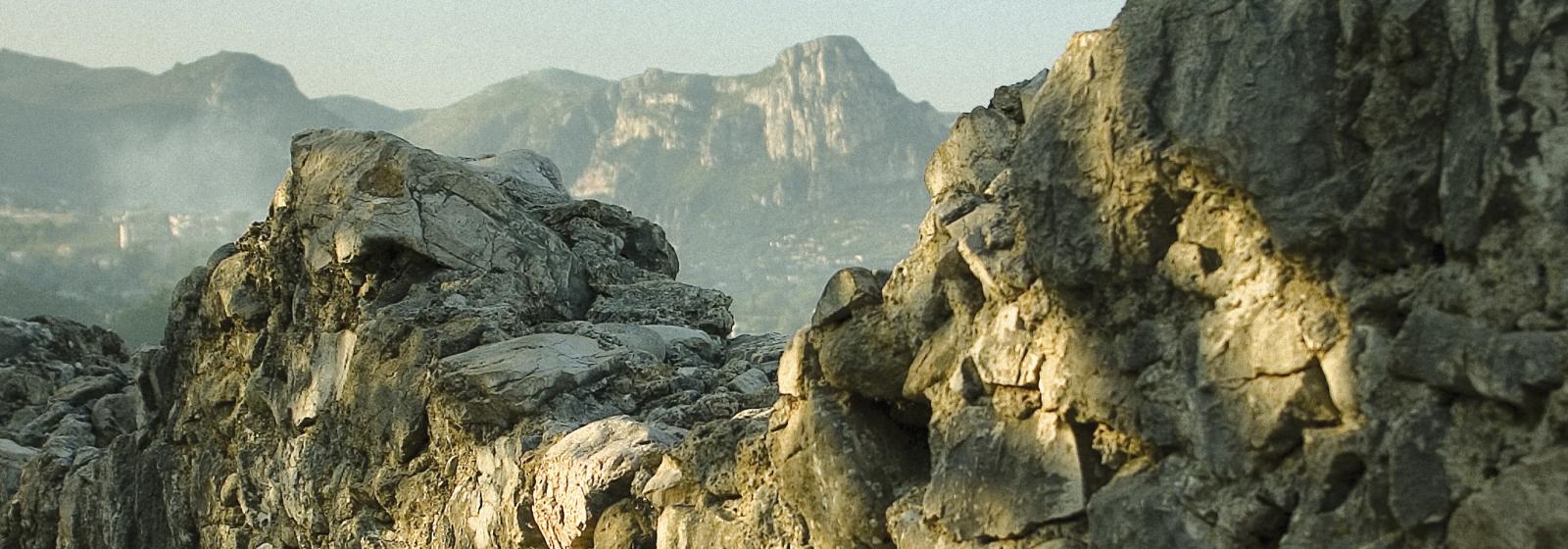
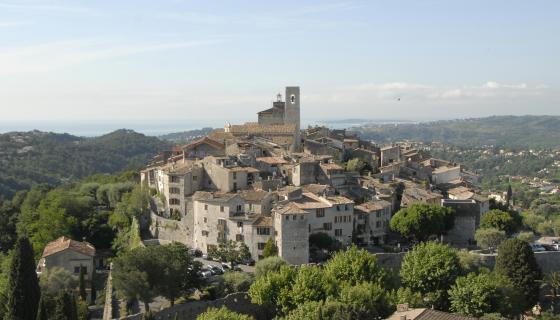
From Antiquity to the castrum Sancti Pauli
Back in Antiquity, an oppidum was erected on the Plateau du Puy. In those days, steeper sites were reputed to be safer.
Over the centuries, people set up house around the old church of Saint Michel du Puy and the château at the top of the hill. Thus evolved the "castrum" of Saint-Paul.
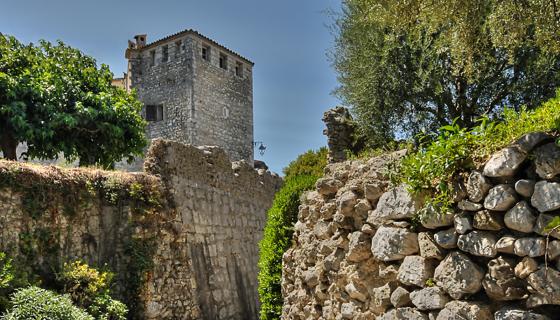
In the Middle Ages, Saint-Paul became a border stronghold
In the Middle Ages, the Counts of Provence administered the region and granted several privileges to Saint-Paul. In the 14th century, the village became the county town of a big district. In 1388, the eastern border of Provence was redefined : Saint-Paul occupied a strategic position and became an important border stronghold...
In 1388, the County of Nice switched its allegiance from Provence to the County of Savoy. This modified the eastern border of Provence, henceforth marked by the River Var. Saint-Paul assumed a strategic position in this new political context, becoming a border stronghold of the utmost importance.
Ramparts were erected during the second half of the 14th century. Two of the original towers can still be seen: the Porte de Vence, with machicolations still intact; and the Tour de l’Esperon.
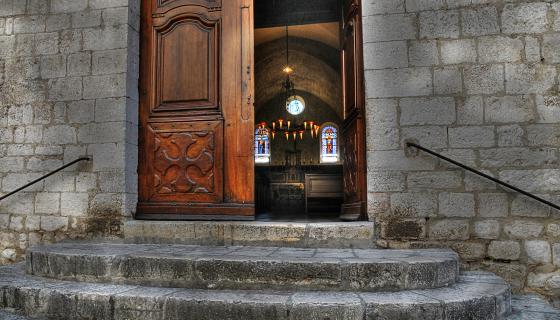
The 17th century and baroque Saint-Paul
In the 17th century, the town experienced a religious renewal thanks to the Bishop of Vence, Antoine Godeau.In 1666, the church was raised to the rank of a collegiate church and was embellished with outstanding altarpieces and furnishings...
Saint-Paul's church was extended and embellished in the 17th century thanks to the efforts of Antoine Godeau - a man of the cloth and a founding member of the Académie Française in 1634 - and donations from the noble families of Saint-Paul. Its sumptuous Saint Clement Chapel decorated with frescoes dates from this period, as does the altar to Saint Catherine of Alexandria with its painting attributed to Spanish painter Claudio Coello.
Influential families such as the Bernardis and the Alziarys had sumptuous mansions constructed in the town. Friezes of leaves and fruit unfurled along their fronts, and inside they were embellished with Rococo frescoes, stucco work, and monumental fireplaces and stairways.
Saint-Paul continued to play its military role and Vauban came to inspect the ramparts in 1693 and 1700.
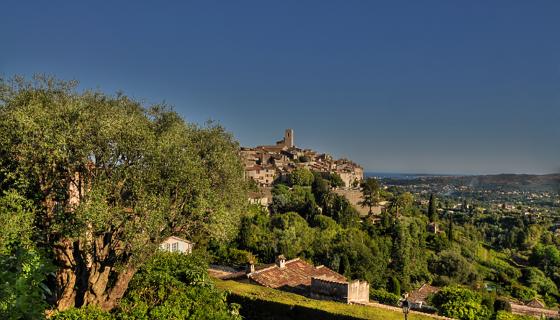
The 19th century brought artists to Saint-Paul
In the 19th century, the hills were covered with flowers, vines and olive trees. As the 20th century dawned, the village's brown stone, the coulours of the countryside and the light of the South of France attracted painters...
Artists first started frequenting Saint-Paul at the beginning of the 1920s. The trail blazers were Paul Signac, Raoul Dufy and Chaïm Soutine. They set up their easels in this peaceful village in Provence, attracted by colours and light of incomparable richness and intensity. Their arrival was fostered by the inauguration of a tramway line between Cagnes-sur-Mer and Vence, via Saint-Paul, in 1911. This opened the village up to the outside world. It was also used to export agricultural produce to Nice, Antibes and Grasse.
The artists enjoyed the company of Paul Roux, a many facetted resident of Saint-Paul – a painter, an art collector and the owner of the Robinson (renamed the Colombe d’Or in 1932), whose walls are still adorned with their paintings even today. Many others followed in their footsteps, including Matisse and Picasso who would call in to see their "neighbours" in Saint-Paul – the former from Vence, the latter from Vallauris and Cannes.
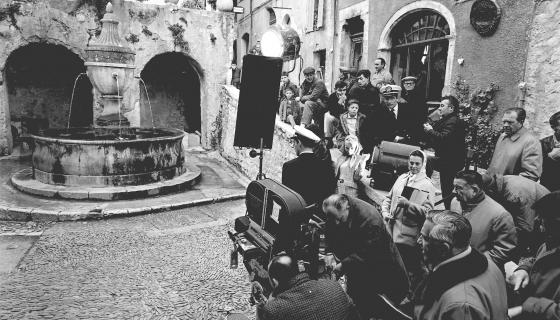
The 20th century: actors, poets and writers
Through the 20th century, actors, artists and writers made Saint-Paul into a bubbling cultural centre. Some simply passed through, others decided to settle. Each in their own way marked the village indelibly. The 1950s and '60s were the village's Golden Age. Saint-Paul became an amazing film set, hosting French and foreign movie stars drawn to the French Riviera by the Victorine film studios in Nice and by the Cannes Film Festival.
Jacques Prévert lived in Saint-Paul for about fifteen years, occupying a tiny house right in the centre of the village called La Miette. He acted as a magnet on other film directors such as Henri-Georges Clouzot and André Cayatte. James Baldwin and Marc Chagall lived in the village for almost 20 years, but opted for the peace and quiet of the surrounding countryside.
For over a century now, Saint-Paul de Vence has been forging its identity as a hub of the arts and culture. Its reputation now extends well beyond the frontiers of the French Riviera, boosted by the famous Maeght Foundation inaugurated in 1964, and the chapel decorated by Jean-Michel Folon, which opened in 2008.
Guided tours...
Explore the village with a guide from the Tourist Information Office: keep a sharp look out and spot the village's treasures!
Learn all there is to know about Saint-Paul de Vence on the Tourist Information Office's guided tours.


